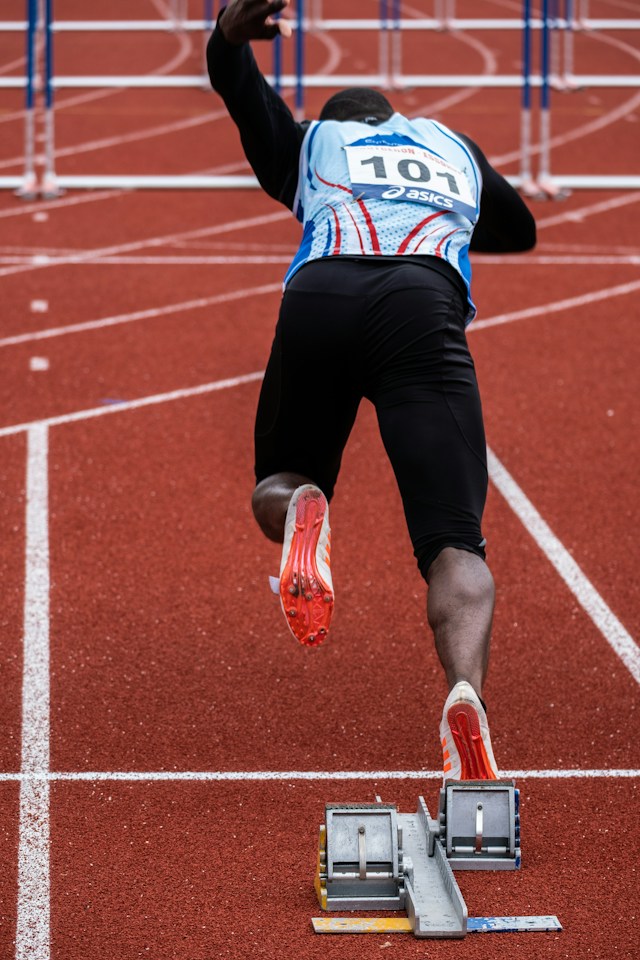When it comes to athletic training, there’s a well-known mantra that says, “No pain, no gain.” As you ramp up your training schedule, it’s tempting to push your body to its limits, working hard day after day to improve your performance. This might seem like the way to go, but in reality, your body needs time to recover from the intense workouts.
Enter active recovery. This is a restful yet still active day that athletes include in their training schedules to allow their bodies to rejuvenate without completely stopping their workout routine. It’s not just about lounging on the couch all day, but about engaging in low-intensity exercises that boost recovery and maintain your overall health. Let’s explore how you can incorporate active recovery days into your training schedules.
A lire également : How Can Mixed Reality Environments Improve Cognitive Training for Competitive Athletes?
The Importance of Recovery
Recovery days are crucial for athletes. They allow your body the necessary time to repair and strengthen itself between workouts. During these periods of rest, the body adapts to the stress of exercise and replenishes energy stores depleted during intense training sessions.
Recovery isn’t just about physical rest. It also includes proper sleep and nutrition, which are both essential to repairing worn-out tissues and cells. As athletes, it’s crucial for you to understand that the lack of adequate recovery can lead to overtraining syndrome, characterized by a decline in performance and physiological function.
Dans le meme genre : How to Build Resilience and Adaptability in Teams Facing Frequent Losses?
Active recovery can help speed up these recovery processes. It involves performing low-intensity exercises that get your blood flowing without creating further stress on your body. The increased blood flow helps to deliver nutrients to your muscles, aiding in their repair and growth.
Designing Your Active Recovery Days
Active recovery days should strike a balance between rest and activity. You aim to stimulate blood flow and keep your muscles moving without adding more stress. So, how exactly do you design an active recovery day?
Start by scheduling at least one active recovery day in your week. The timing will depend on the intensity of your workouts and how your body feels. Listen to your body and give it the rest it needs.
Your active recovery day can include light activities like yoga, swimming, walking, or an easy bike ride. The key is to keep the intensity low. You shouldn’t be gasping for breath or feeling any muscle burn. Your workout should feel easy and relaxed.
Staying Active on Recovery Days
The idea of staying active on a rest day might sound counter-intuitive, but it’s essential to enhancing your body’s recovery process. Keeping your body moving on recovery days helps to flush out any metabolic waste products from your muscles, therefore reducing muscle soreness and stiffness.
Choose activities that you enjoy and that work different muscles than your regular training. For example, if you’re a runner, you might choose a light swim for your active recovery. The water’s buoyancy reduces stress on your joints and muscles, allowing them to recover while you’re still staying active.
Active recovery workouts should last between 20 to 45 minutes. Remember, the goal is to promote recovery, not to add more stress to your body.
Nutrition and Sleep: Key Elements in Recovery
Active recovery isn’t just about light exercise. Proper nutrition and sleep play significant roles in your body’s ability to recover.
Ensure you’re consuming a balanced diet that provides all the essential nutrients your body needs for repair and growth. Protein, for instance, is crucial for muscle repair while carbohydrates replenish your energy stores.
Getting enough sleep is also incredibly important. During sleep, your body enters a state of deep relaxation and healing, repairing tissues and cells that have been damaged during your workouts. Aim for at least 7-9 hours of sleep per night to facilitate optimal recovery.
Active Recovery: A Game Changer in Training
Incorporating active recovery days into your training schedule can dramatically improve your overall athletic performance. It allows your body to rest, repair, and strengthen itself between workouts, reducing the risk of injuries and overtraining.
Active recovery is not about being lazy or slacking off. It’s about respecting your body’s need for rest and recovery. It’s a proactive approach to rest that keeps you moving, keeps your muscles engaged, and accelerates the recovery process.
Remember, training is just one part of the equation when it comes to improving athletic performance. Recovery, in all its forms, plays an equally important role. So, treat your recovery days with the same respect and commitment you give to your training days. Your body, and your performance, will thank you for it.
The Difference Between Active Recovery and Passive Recovery
Understanding the difference between active recovery and passive recovery can help you improve your training schedules. Passive recovery involves complete rest, where you take a break from any physical activity. This could mean sitting on the couch, watching TV, or just lounging around. Active recovery, on the other hand, involves still being physically active, but at a significantly lower intensity level than your regular training sessions.
So, why opt for active recovery rather than passive? Active recovery has been proven to increase blood flow more significantly than passive recovery. This increased blood flow promotes faster delivery of nutrients to your muscles, thereby speeding up the recovery process. Additionally, active recovery can help flush out metabolic waste products from your muscles, reducing muscle soreness and stiffness.
Active recovery also helps to keep your heart rate moderately elevated. This is beneficial because it contributes to maintaining your cardiovascular fitness, even on your rest days. Moreover, active recovery can also aid in keeping your overall athletic skills sharp, as you remain physically active and engaged.
That said, it’s important to note that passive recovery has its place and can be beneficial when your body is extremely worn out or you are experiencing pain or injury. The trick is to understand your body’s signals and respond accordingly, incorporating either active rest or passive, depending on what your body needs at that time.
Examples of Active Recovery Workouts
There are several ways to engage in active recovery, and it’s essential to choose activities that you enjoy. The key is to keep it low impact and low intensity, so it doesn’t add more stress to your body and defeat the purpose of a recovery day.
Walking is one of the simplest and most accessible forms of active recovery. It improves blood circulation, helping to speed up recovery, and it can easily be done anywhere.
Swimming is another excellent choice. It’s a full-body workout that also stimulates blood flow, but without the heavy impact on your joints, thanks to the water’s buoyancy.
Tai chi and yoga are great for active recovery days as they involve slow, controlled movements and deep breathing. These activities not only offer physical benefits but also help reduce stress, enhance focus, and promote mental wellbeing.
Cycling at a leisurely pace is yet another option. It’s a low-impact activity that gets your legs moving and your blood pumping without straining your muscles or joints.
The goal isn’t to get a full workout on these days, but to engage in light, enjoyable activities that promote recovery. Ideally, your heart rate should stay below 60% of your maximum, and the activity should last around 20-45 minutes.
Conclusion
Active recovery is an integral part of an athlete’s training regimen. It not only helps speed up the recovery process but also ensures you stay physically active and engaged, even on your rest days. The benefits of active recovery extend beyond physical as they also contribute to mental well-being.
Remember, it’s about maintaining a balance. Overdoing it on your active recovery day can lead to inadequate recovery, while too much passive recovery might make it harder for you to get back into your regular training routine. So, listen to your body, choose low-impact, low-intensity activities that you enjoy, and don’t forget the importance of good nutrition and quality sleep.
So, as you plan your training schedule, make sure to include active recovery days. They can be a game-changer in your training, helping to improve your performance, reduce the risk of injuries, and keep you mentally and physically healthy. In the end, it’s not just about training hard but also training smart, and active recovery is a smart strategy for any athlete.











